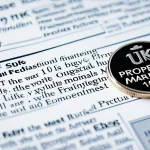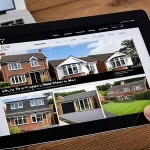Current Surge in Green Real Estate Investment in the UK
Recent data highlights a significant growth in green real estate investment UK-wide, reflecting a rapid shift towards sustainability in property markets. This surge can be mainly attributed to evolving market dynamics where investor demand for environmentally responsible assets is rising alongside supportive government policies. Green real estate investment UK is no longer a niche segment but a core element in the broader investment landscape.
Key drivers include policy incentives such as grants and tax reliefs designed to encourage energy-efficient developments, alongside heightened awareness of climate change impacts. Investors increasingly prioritize projects with proven energy efficiency, recognizing the long-term benefits for both returns and environmental impact. This combination of external policy support and internal investor motivation accelerates market growth continuously.
Also read : Why Is the UK Real Estate Market So Volatile Right Now?
Several notable case studies from the UK demonstrate how sustainable property initiatives translate into market success. For example, developments integrating renewable energy solutions and advanced insulation have shown superior performance in tenant retention and operational costs. These successes underline how green real estate investment UK aligns profitability with environmental responsibility, confirming recent trends favoring sustainable approaches.
Environmental and Economic Impacts of Green Property Investments
Sustainable property projects deliver significant environmental benefits by markedly reducing the carbon footprint of buildings. This reduction stems primarily from improved energy efficiency measures such as advanced insulation, efficient heating systems, and integration of renewable energy sources. These innovations lead to lower greenhouse gas emissions, helping the UK meet climate targets while enhancing building performance.
Topic to read : How is the UK’s Real Estate Sector Handling Financial Market Volatility?
From an economic perspective, green real estate investment UK offers compelling advantages. Properties with verified sustainability credentials tend to enjoy enhanced property values and greater marketability. Investors and occupants consistently show preference for buildings that reduce energy costs and offer healthier living or working environments. This demand drives pricing premiums, improving long-term asset value.
Furthermore, sustainable property contributes to long-term cost savings. Operational expenses decline due to energy-efficient systems and decreased maintenance needs, benefiting both owners and tenants. Reduced utility bills and lower carbon taxes generate positive financial outcomes, enhancing return on investment and securing a competitive edge in the market. Thus, the environmental and economic benefits align to reinforce the attractiveness of green real estate investment UK.
Role of Government Policy and Regulation
Government policy plays a pivotal role in accelerating green real estate investment UK by setting clear standards and offering incentives that encourage sustainable development. The UK government policy framework includes various grants, tax incentives, and regulations designed to embed energy efficiency and reduce carbon emissions in the property sector. These measures directly support investors and developers aiming to meet growing demand for environmentally friendly buildings.
Key among regulatory mechanisms are green building standards such as BREEAM (Building Research Establishment Environmental Assessment Method) and mandatory Energy Performance Certificate (EPC) requirements. BREEAM certification evaluates a building’s environmental impact across categories like energy, water, and materials, promoting best practices for sustainability. EPCs rate buildings on energy efficiency, influencing both rental demand and property values. Compliance with these standards ensures projects align with both market expectations and regulatory obligations, enhancing their attractiveness in the green real estate investment UK landscape.
Looking forward, future policy trends indicate a tightening regulatory landscape aiming for net-zero targets by 2050. This includes stricter minimum energy performance requirements and expanded incentives for renewable energy integration in new and existing buildings. Continuous adaptation of policies is crucial to maintaining market growth and ensuring that green building standards evolve to reflect technological advancements and climate commitments. Thus, the intersection of UK government policy and regulation remains a cornerstone driving sustainable property development and long-term investment viability.
Financial Viability and Market Challenges
Understanding investment returns is critical when considering green real estate investment UK. Recent studies show that while green properties typically require higher upfront capital due to advanced technology and materials, they often deliver superior long-term returns through increased rental income, higher occupancy rates, and reduced operating costs. These factors contribute to a positive risk-adjusted return profile, making sustainable property an attractive option for investors seeking both financial and environmental benefits.
Despite promising returns, significant financial barriers persist. The higher initial costs can deter smaller investors or developers lacking access to favorable financing. Additionally, uncertainty about future regulatory changes and inconsistent valuation methods for green assets contribute to hesitancy in the market. Financing green real estate projects often requires specialized loans or incentives, which are not uniformly available, creating disparities across regions and project types.
Moreover, knowledge gaps pose challenges. Many investors and developers find it difficult to accurately assess the true value and risks associated with green real estate investment UK due to limited transparency and varying standards. This lack of clear information can slow adoption and limit mainstream market acceptance. However, education initiatives and improved data analytics are helping bridge these gaps, fostering greater confidence in sustainable investment.
In summary, while financial viability of green real estate investment UK is increasingly evident through attractive investment returns, overcoming challenges related to costs, financing, and knowledge remains essential to unlocking the full potential of the market. Addressing these issues will enhance mainstream adoption and support the continued growth of sustainable property investments.
Future Outlook: Is the Green Investment Boom Sustainable?
The sustainability of green real estate investment UK hinges on continued alignment of market forces, policy support, and technological advancement. Current market forecasts predict steady expansion driven by tightening environmental regulations and increasing investor appetite for sustainable property. Analysts expect that as standards evolve, demand for certified green assets will intensify, embedding sustainability deeper into property valuation models.
Experts agree that the green investment boom is likely to demonstrate resilience despite potential economic fluctuations. This resilience owes much to the dual appeal of environmental responsibility and robust financial performance. Investors increasingly view green real estate as a hedge against regulatory risks and energy cost volatility, strengthening confidence in long-term returns.
For developers and policymakers, the imperative is clear: ongoing innovation and adaptive regulations will be crucial to supporting growth. Proactive strategies include integrating renewable technologies, enhancing transparency in sustainability metrics, and expanding financial incentives. These measures ensure that the green real estate investment UK sector remains attractive and viable.
In summary, expert opinions underscore a positive but vigilant outlook. The future of green real estate investment UK depends on sustained collaboration that balances environmental goals with economic realities, securing a durable boom in sustainable property markets.





